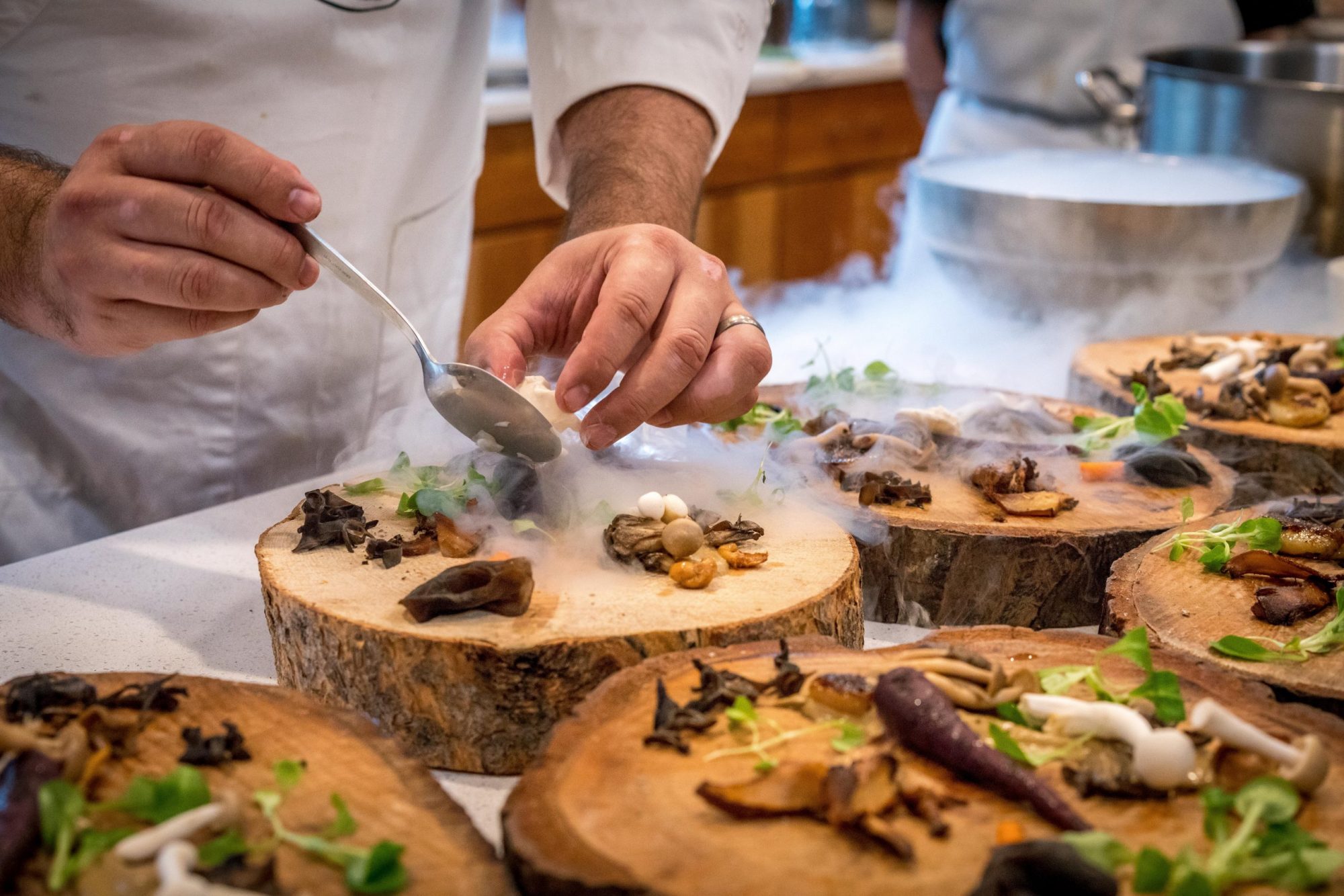This post contains many significant spoilers for the film The Menu currently streaming on Disney+.
When I was an undergrad student I used to co-host a weekly movie review show on the university radio station. Demonstrating that I was as cool back then as I am now (this is clearly not one of the spoilers I mentioned above, as this is blindingly obvious). It was a lot of fun, and meant that I got to go into press screenings of forthcoming films, getting to see them before everyone else. Although don’t get too excited, it was just the Odeon in Sheffield. We’re not talking Leicester Square here. Still, I like to think that this experience gives me permission to continue to comment on any and every film I see. And crucially, tell people my thoughts.
The Menu is a blackly comic satire which explores class and privilege, the purpose of doing and participating in art, and the nature of cults of personality. All the while showcasing frankly delicious looking food and highlighting the incredible talents of Ralph Fiennes, Anna Taylor-Joy and the often over-looked Nicholas Hoult. Taking place largely in the restaurant and kitchen itself, the film makes you feel like you are also taking part in this twisted Michelin-starred experience. The film continues to build tension from the start (like a pressure cooker, if you will…) until the violent ending. And it’s here that the forensic anthropologist got excited – and it’s here that the key spoilers land.
The final course of the meal involves the murder off the diners in a S’mores-based inferno. In a film full of surprises, the overlap with my burned bone research was possibly one of the best for me. In essence, everyone gets wrapped in marshmallow capes, given chocolate hats, and toasted in a fire before the whole place explodes. As I was mulling over the film afterwards, I got to wondering whether the forensic investigators called to the scene hours later would be able to tell whether the victims had indeed been turned into human campfire treats? This led to a bit of a thought exercise (which is infinitely a better type of exercise than, you know, physical exercise).
Whether or not you can detect substances in the remains of a fire or pyre burning has been a question that has intrigued cremation researchers for many years. In the forensic context, this often focuses on whether accelerants can be detected in the remnants. When we experimented at Teesside many years ago, we struggled a bit to do that although we got some promising results. Others have had more success. Researchers in Australia were able to distinguish different petrochemicals in fire debris, which has clear implications for arson investigations. This has also been supported by experimental work from American researchers at the National Institute of Standards and Technology in Gaithersburg. Indeed, a review paper by Sigman and Williams (2020) highlights the increase in such work over the past 30 years or so, whilst also underlining the importance of statistical validation for such approaches for the courts. This problem is even more challenging in archaeology, where long-term taphonomic factors will have an impact on the survivability of such samples – something that Lisa Monetti, K. Gafner and I try to tease out in our special issue of the Journal of Archaeological Science: Report in 2021. Nevertheless, despite the impact of taphonomy, material added to pyres can be detected (such as plant remains from Roman cremations, or fruit stones from Mesolithic cremation deposits). No such luck detecting liquids (e.g. wine used to douse pyres), although it might be interesting to expand the results of the sort of work Waterhouse was doing on the impact of weather on burned bone fragmentation to the application of water or liquids after the fire has started or died.
Anyway, back to the food. Which could be my personal motto if translated into Latin. The fire that started at the end was fairly low intensity, and so it is likely that much of the soft tissues and surrounding marshmallow may have survived if the fire was extinguished quickly enough. But the explosion at the end, and the expansion of the fire through use of kitchen gas likely put an end to that. The restaurant was on an island too, making an emergency response slower. Forensic investigators would have been able to reconstruct the scene to determine that the diners were sitting at their tables, and that the kitchen staff were by the ovens, and indeed that one of the victims had part of a finger chopped off (traumatic injuries survive the burning process), but when it comes to food surviving burning, well, in terms of the fire, less is s’mores.

Great post.